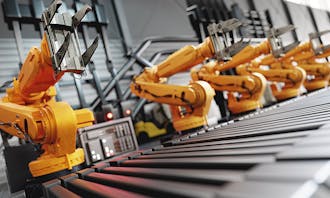Factories under pressure: Reducing Burnout in the workplace
2022-07-12
3 min read
According to the US Bureau of Labor Statistics, the manufacturing industry experienced the second-largest increase in resignation rates in 2021. This has risen by 1.2 per cent since 2020.
This increased resignation rate is second only to the leisure and hospitality industries.
Although, not all industries are experiencing the effects of the Great Resignation. In fact, statistics show that lower-paid employees are the ones leading the charge, especially in manufacturing. Within this sector, those in lower-paying nondurable goods industry had the highest resignation rate.
The manufacturing industry has not been known for its high turnover rate. So what has changed, and how can employers address these issues?
At the breaking point
Many factors can contribute to an employee’s resignation. However, there are some common workplace stressors across the industry. If these are addressed, it could decrease the resignation rate.
It is no surprise that one of the most stressful aspects of a job is the high demands on an employee's body and mind. Particularly when the work involved is fast-paced and physically demanding. As is the case with some of the work performed in factory-based manufacturing.
With the large production quotas, employees can often feel overwhelmed. Therefore, this can lead to excessive stress and, in some cases, burnout.
Burnout is a state of emotional and physical exhaustion. Normally, caused by constant exposure to unrelenting stress over an extended period.
According to the American Psychological Association, the cost of stress in the work place is more than $500 billion annually. Moreover, it is only the economy of the United States is taken into account in this number. This means that up to 550 million workdays are lost from employee burnout in the workplace.

How to reduce employee turnover in the manufacturing sector
Many reports suggest that the causes of burnout and resignation rates are employees not feeling valued and performing boring, monotonous work. A simple increase in wage will not be enough to fix this problem on its own. For lower-paying manufacturing jobs, employers should seek to increase their employees’ compensation. However, they also need to boost employee engagement in manufacturing.
Industry 4.0 automation is now digitalising manufacturing. In turn, this can help employers reduce turnover rates.
By automating a repetitive and nonengaging task, employers can free up employees' time for more engaging work. Leading too a reduction in stress. For instance, using machine vision systems for quality checks rather than employing human inspectors.
Therefore, creating an engaging work environment and reducing burnout in the workplace.
Spotlight on safety
How to reduce employee stress in the workplace
Another common workplace stress in manufacturing is a hazardous work environment. A factory is no easy place to work and often requires hard physical exertions. Implementing digital technologies, such as exoskeletons and palletizing robots, can help reduce accidents. Therefore, this decreases the amount of time off for injuries while also lowering maintenance costs.
There are, of course, many common workplace stressors manufacturing employees face. However, issues such as monotonous work and safety concerns are all things employers can and should aim to address. Implementing technologies to reduce the strain put on employees is not only beneficial for workers, but also for the business. A better, more engaging work environment can increase productivity.
According to a recent study by Manufacturing, engaged employees' productivity is 70 percent higher than those of non-engaged workers. This study also found that engaged employees had better safety records. As well as, lower turnover rates and greater profitability.
By minimising the impact of the most common stressors in manufacturing, manufacturers can maximise the productivity of the company. With all the manufacturing disruptions it can face, it is time for employers to take control of manageable disruptions. Specifically, worker burnout and injuries on the factory floor.



